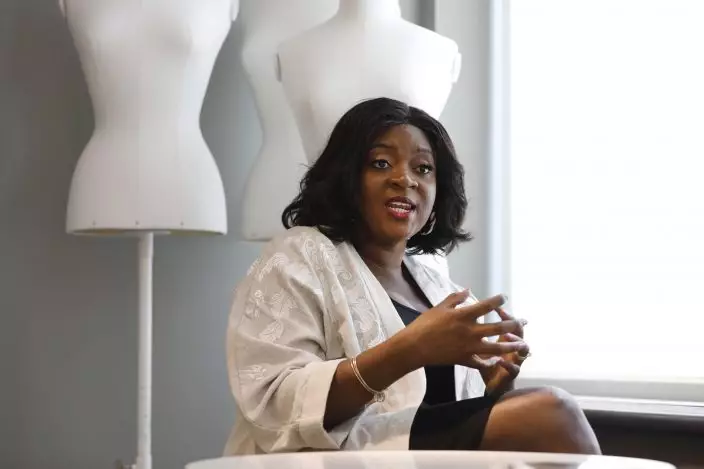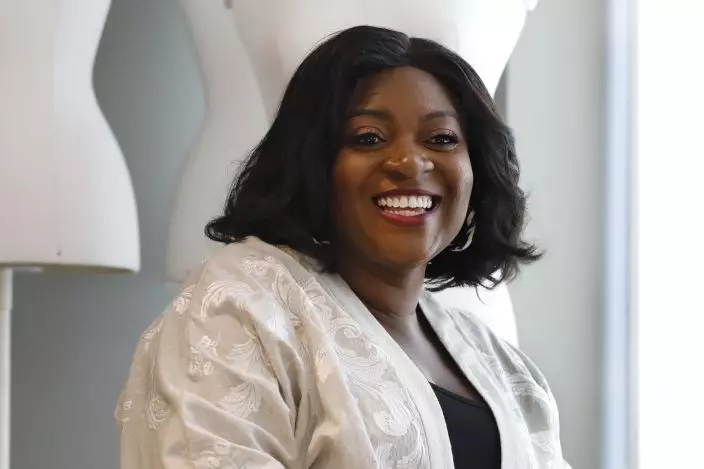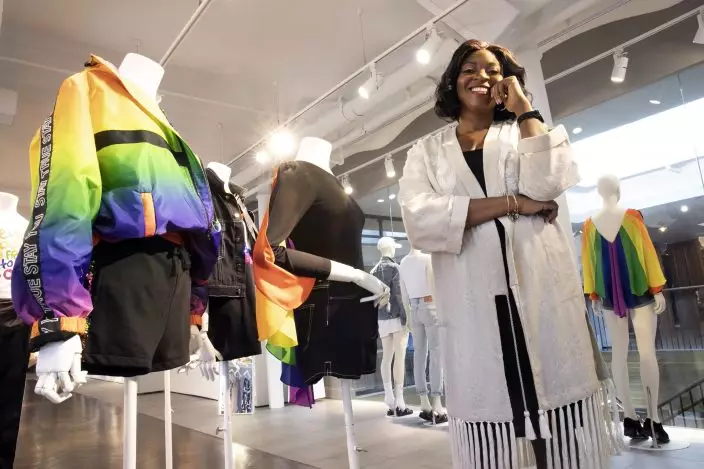H&M is set to kick off a series of workshops and training this fall for thousands of its employees at its more than 500 North American stores aimed at addressing unconscious bias.
The moves are the first of their kind for the fast-fashion chain and come after it faced international backlash early last year when a black child model wearing a "monkey in the jungle" T-shirt was featured on its website in United Kingdom.
Since the uproar, H&M has hired Nigerian-born Ezinne Kwubiri, the first to hold the position as H&M head of inclusion and diversity for North America, its largest market. Kwubiri, a former Viacom executive who joined last October, reports directly to H&M's new North American president, Martino Pessina. She works with Annie Wu, who is based at the company headquarters in Stockholm and was named global head of diversity and inclusiveness of H&M early last year. Kwubiri is developing a comprehensive inclusion, diversity and cultural plan that includes training for all 17,000 U.S. workers, including new employees during their orientation. Training has already been completed for the management, regional and district teams. H&M has turned to consulting firms like Accenture to help develop the workshops.

In this June 4, 2019, photo Ezinne Kwubiri, H&M's Head of Diversity and Inclusion, North America, is interviewed in their New York headquarters. Kwubiri recently spoke with The Associated Press about her new role at H&M and the challenges for the fashion giant, which has more than 4,000 stores globally. (AP PhotoRichard Drew)
The moves come as other companies including Gucci and Prada are pledging to combat racism in the fashion business after a series of missteps.
Kwubiri recently spoke with The Associated Press about her new role at H&M and the challenges for the fashion giant, which has more than 4,000 stores globally. The conversation has been edited for clarity and length.
Q. What are the biggest challenges with this job?

In this June 4, 2019, photo Ezinne Kwubiri, H&M's Head of Diversity and Inclusion, North America, is interviewed in their New York headquarters. Kwubiri recently spoke with The Associated Press about her new role at H&M and the challenges for the fashion giant, which has more than 4,000 stores globally. (AP PhotoRichard Drew)
A. We are represented in 71 markets so there is a lot of moving pieces that comes with it. Just thinking about how we are providing benefits to our staff... how we're engaging with them and also how we're being represented in the communities.
Q. Are you trying to increase the diversity of the design team?
A. There's no perfect definition of diversity. I think we're still working towards that.

In this June 4, 2019, photo Ezinne Kwubiri, H&M's Head of Diversity and Inclusion, North America, poses with items in the company's Pride OUT Loud collection, in their New York headquarters. Kwubiri recently spoke with The Associated Press about her new role at H&M and the challenges for the fashion giant, which has more than 4,000 stores globally. (AP PhotoRichard Drew)
Q. H&M never had unconscious bias training until now. How would you define unconscious bias?
A. It's an attitude and it's a behavior that you may have based off an experience you've had in your past and how you've grown up. We want to be able to be considerate of the different diverse experiences.
Q. How do you measure the effectiveness of unconscious bias training?
A. That's something that we are always trying to figure out. We do pulse surveys. It's to evaluate the climate of the workspace. We revised them to include more questions specific to biases, sense of belonging, diversity. It's yearly. We are looking to have it twice a year. It's not going to be perfect. We did host a few focus groups. I plan to do a second portion in the next couple of months. We would have the focus groups every six months. We are not going to get a perfect answer, but it will be interesting to see if it is resonating to the people that we're providing these programs and activities and training for.
Q. What are some of the controls you added to avoid another fashion or advertising blunder?
A. Things are being done with more intention. So if we had prints, we would be sharing that print design with multiple people across the entire organization, not just one location, so people from India, people from the U.S., people from South Africa, Sweden etc. We're just saying, 'give me your instant feedback on this.' So we are not holding it to a small group to say 'yes' or 'no.' We are really opening it to a diverse group.
Q. Are you afraid that companies' efforts are just a fad?
A. We're definitely committed and don't think this is a one-off. I think that our situation was heightened because of the sweater incident but it's always been part of the brand. I think now we are just doing it in a more intentional manner.
Follow Anne D'Innocenzio: http://twitter.com/ADInnocenzio


